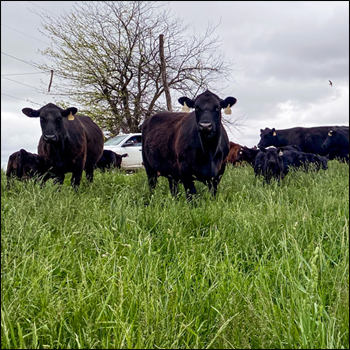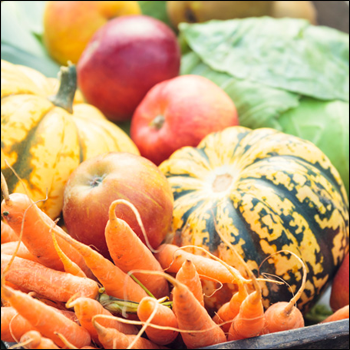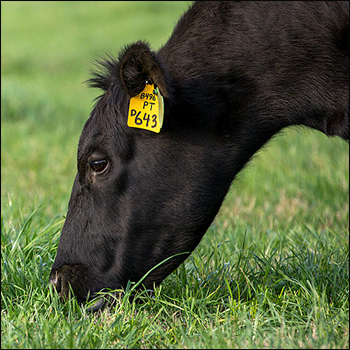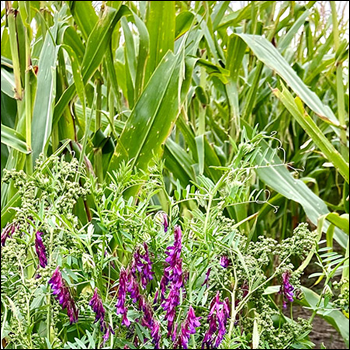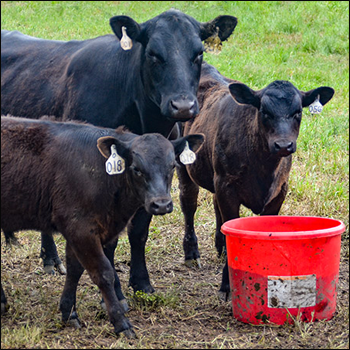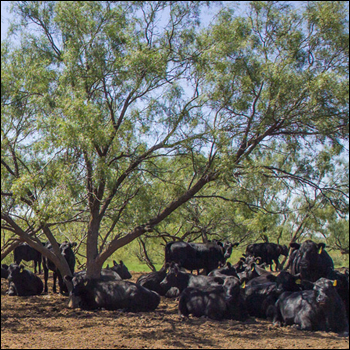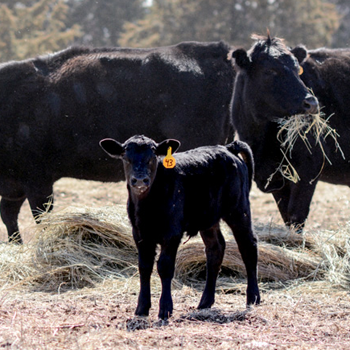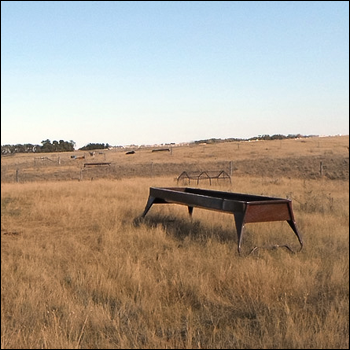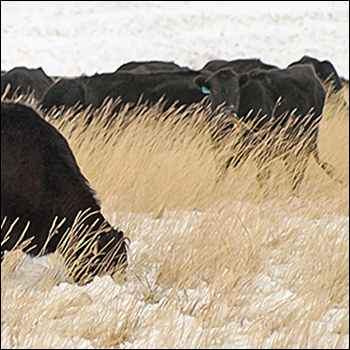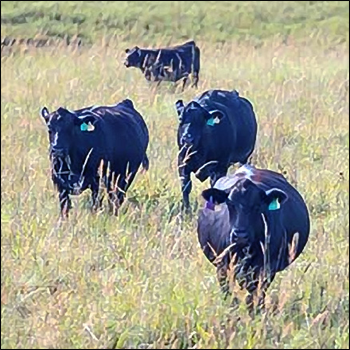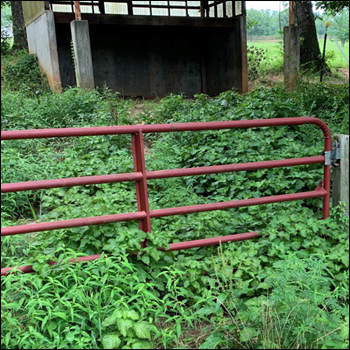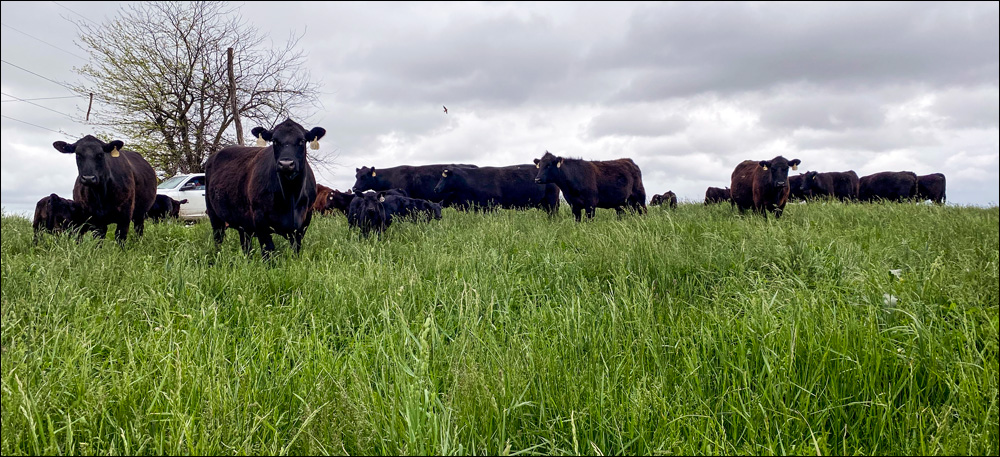
Stretch Grazing Resources
Let rumination work for you.
When you slow down long enough to really think about it, you’re apt to realize that rumination is a wondrous thing. Because of a cowbrute’s ability to upcycle even low-quality vegetation and turn it into high-quality meat protein, forage truly is a grazier’s most valuable resource. Savvy graziers want to stretch grazing resources as far as possible, while still promoting the health and productive capacity of the land. It’s all about good grazing management.
Management strategies for stretching grazing resources were discussed during the Cattle Industry Convention and Trade Show, hosted Feb. 1-3 in Houston, Texas. As part of the Cattlemen’s College® educational opportunity, attendees received food for thought from a pair of producers representing very different production environments, and a university forage systems specialist.
Chad Woods talked about optimizing grazing opportunities on his family’s hay and beef cattle operation near Hurdle Mills, N.C. Woods noted hay is raised primarily as a cash crop, and cattle are managed such that little hay is used for supplemental feed.
“We’re located in the eastern Fescue Belt and our forage base is mostly novel endophyte tall fescue,” said Woods, noting fescue’s long growing season. “We rely heavily on that for spring and fall grazing, and we stockpile some for winter use.”
According to Woods, some cultivated acres are seeded to summer and winter annual forages that provide seasonal grazing and allow for resting of perennial pastures. Woods said summer annual production is particularly important, utilizing millets, sorghum-sudangrass and forage corn.
“It might seem odd to some people, but we also plant crabgrass. It’s probably our favorite summer annual because of its heat- and drought-resistance,” shared Woods, also explaining that intensively managed rotational grazing management is applied to all forage resources.
It never hurts to have a competitive advantage. For the Woods operation, it’s the close proximity of multiple local breweries that serve as sources of a byproduct feed. Spent brewers’ grains are available for transportation and feeding costs only. Relatively high in protein and energy, the brewers’ grains serve as supplemental feed that helps stretch grazing resources and reduce the need to feed hay.
Cow-calf and stocker operator Rob Elder talked about optimizing forage resource use on his family’s ranch in far eastern Oregon. The Malheur County operation runs on public lands in the summer, bringing cattle to deeded land in the winter. According to Elder, the ranch harvests no homegrown hay, preferring to use those forage acres for extended grazing. Therefore, all harvested feed is purchased.
“We’ve been feeding mostly baled cornstalks, which cost us $80 a ton, delivered,” said Elder, explaining that the daily cost per cow, including feeding cost, is about $1.49.
Forage resources are used more efficiently by managing cattle such that only the more productive animals remain on the ranch. Offering an example, Elder said any cow over 6 years of age that is found open is sold. Younger cows found open are exposed again and sold as bred females.
Also speaking during this forage-focused session was Texas A&M University Forage Systems Specialist Vanessa Corriher-Olson, who advised attendees to use all of the tools available to enhance management decision-making. In particular, she recommended soil testing and forage analysis.
Editor’s note: Troy Smith is a cattleman and freelance writer from Sargent, Neb. Photo by Kasey Brown.

Angus Proud
In this Angus Proud series, Editorial Intern Jessica Wesson provides insights into how producers across the country use Angus genetics in their respective environments.
 Angus Proud: Scott Sproul
Angus Proud: Scott Sproul
Oklahoma operation learned wisdom of moving calving season to better suit their marketing needs.
 Angus Proud: Bubba Crosby
Angus Proud: Bubba Crosby
Fall-calving Georgia herd uses quality and co-ops to market calves.
 Angus Proud: Jim Moore
Angus Proud: Jim Moore
Arkansas operation retains ownership through feeding and values carcass data.
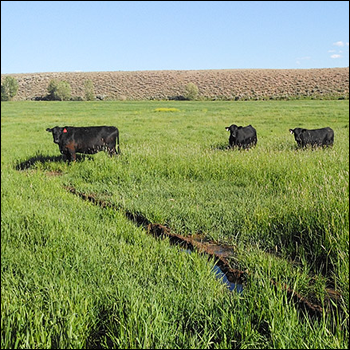 Angus Proud: Stephen Shiner
Angus Proud: Stephen Shiner
Idaho operation rotates pastures in summer and raises crops for winter.
 Angus Proud: Les Shaw
Angus Proud: Les Shaw
South Dakota operation manages winter with preparation and bull selection.
 Angus Proud: Jeremy Stevens
Angus Proud: Jeremy Stevens
Nebraska operation is self-sufficient for feedstuffs despite sandy soil.
 Angus Proud: Dave Rutan
Angus Proud: Dave Rutan
Angus breeder gets the most out of his bull investment by partnering with opposite calving-season operation.
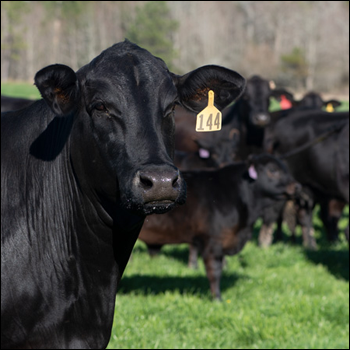 Angus Proud: Nickey Smith
Angus Proud: Nickey Smith
AngusLink helps Louisiana cattleman gain more for his calves.
